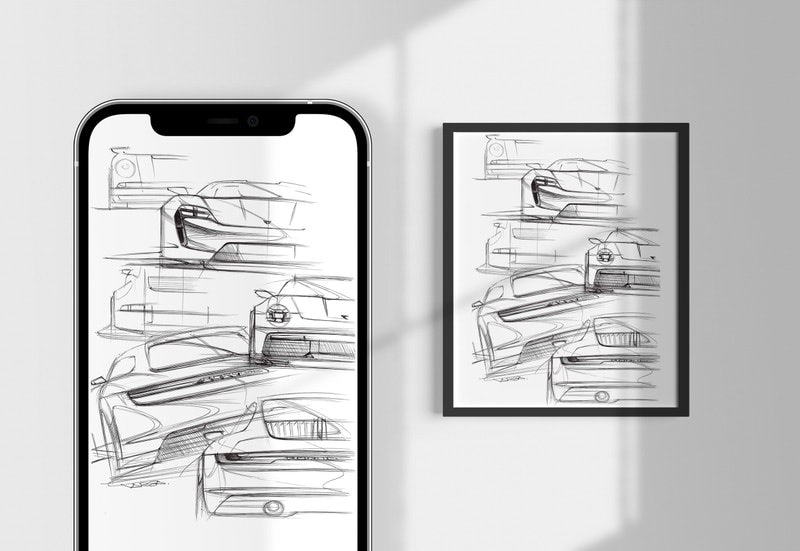Luxury brands can no longer ignore the opportunities that Web3 offers and support should they wish to maintain their cultural relevance and cater to a potential new customer base. With this in mind, a recognizable metaversal identity has become a widespread implementation across the luxury market. Web3 has also provided this sector with new avenues for storytelling development, where they can evolve their narrative to activate and engage a strong, steadfast community.
While the full scope of the metaverse is still yet to be unearthed, this new tool — and new palette of expression — is rapidly expediting in visibility, popularity, and revenue growth. According to Morgan Stanley, in less than 10 years, digital collectibles from luxury brands could make up 8 percent of a roughly 240 billion market dollar by 2030.
Given the importance of this emerging, lucrative market, Jing Daily invited an expert panel for their webinar, “NFT Collaboration: Pros and Cons of Monetizing Luxury NFTs” to explore the building blocks of NFT curation, outlining the benefits, and pitfalls, of the process. The panel included Giovanna Graziosi Casimiro, Head of Decentraland and Metaverse Fashion Week, Jamie Gill, CEO of Roksanda, and Michaela Larosse, Head of Content & Strategy at The Fabricant.
Here are Jing Daily’s top five takeaways.
Realistic, long-term expectations are critical for brands who are looking to enter the metaverse.#
For Web3, Larosse believes that it’s “more beneficial for brands to think of the long-term rewards as opposed to the immediate value.” Brands should be looking into creating a long-term presence in the metaverse that is supported by a well-established infrastructure and thriving digital ecosystem, as opposed to fixating on the revenue generation advantages.
Larosse also stated that this can be achieved through a process of strategy experimentation and dissecting what model works best for a brand and their story. Non-fungible tokens are an innovative and effective route for brands to take when discussing how to uphold their heritage, and how to keep their existing community engaged through new and exciting developments.
Brands must ensure that they are not alienating their existing, older consumer base in favor of a Gen-Z audience.#
While older consumers have previously on-boarded onto Web2 — demonstrating that they are willing to participate in the experience — brands should be prepared to outline what the value of an immersive Web3 internet is to their consumers and make it clear as to why they should participate in the most easy and convenient way possible. By framing the metaverse as simply the next version of the internet, brands can work towards communicating this Web3 transition in a way that resonates with their consumer’s stories and lived-in experiences.
For Roksanda, it was a case of acknowledging that their consumer base included a mature audience and not just the digital-native, and finding a way to make the tokens appeal to them. “The way we sold our NFTs both on and offline was as a limited-edition collectible, in the same way that people collect cards or a one-of-one art piece,” Gill says. “We saw that that approach worked well, similarly to when Porsche launched their NFT series and adopted a similar method.”

The functionality of NFTs is still an issue for brands, as many face stumbling blocks when establishing a Web3 presence.#
Web3 hosts its own array of technical challenges which brands must be willing to navigate and overcome. Brands should be open to receiving education on how to enter the metaverse and would benefit from connecting with experts in the area to fully understand how to achieve the most seamless transition into the digital sphere. This can be done through connecting brands with digital creators in the realm, who can explain the process in order to make it as transparent and simple as possible.
Another classic error is brands failing to activate a community beforehand. Long-term value propositions should be prioritized over one-off activations (i.e. a brand doing one NFT drop then doing little else) in order to engage a consumer base and create an exciting and interesting narrative. Brands need to consider how their tokens build into a longer, continuous digital story.
The importance of digital identity; brands need to understand that they are catering to their consumers' second persona.#
Web3 is an outlet for consumers to explore who they are through expanding upon their own existing identities, or by creating a completely new one. Brands must recognize that what a consumer purchases in reality will not always run parallel to their purchase habits and choices in the metaverse.
“For brands, that means they’re dealing with customers who buy specific products from the physical shop, but in the metaverse they might want to explore more of the brand and the different aesthetics the brand offers, allowing them to be more experimental with their purchases,” Casimiro says. “Consumers are going to have two different aesthetics for two different occasions; one being physical, the other virtual.” In short, people view their virtual identities as an entirely different narrative to their physical selves, which is something that brands must be willing to understand.
Each brand will have their own unique strategy when it comes to the process of NFT curation.#
In the physical realm, the majority of the value is found within the product itself. But for Web3, there is more emphasis on the value that a community is bringing to the product. How brand’s address this is essential to how successful their digital expansion will be.
Larosse explains that each strategy should focus on how a brand is transitioning their story into the digital space through authentic communication. For brands, it’s about upholding their spirit and values, while ensuring that this ethos translates well into the metaverse. “Luxury brands have incredible stories to tell their consumers, so it’s about executing the story in a way that’s relevant to their audience and resonates with them and extends the value of everything they’re doing.”


